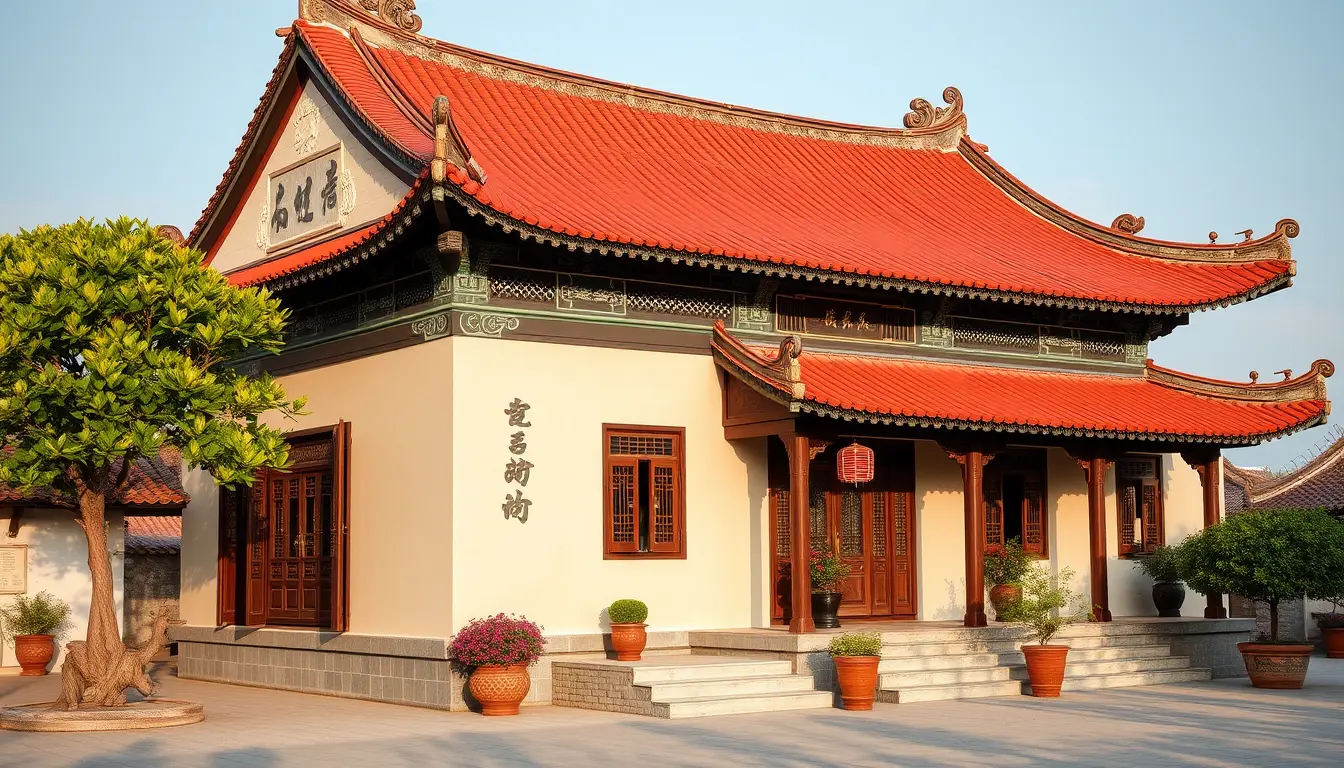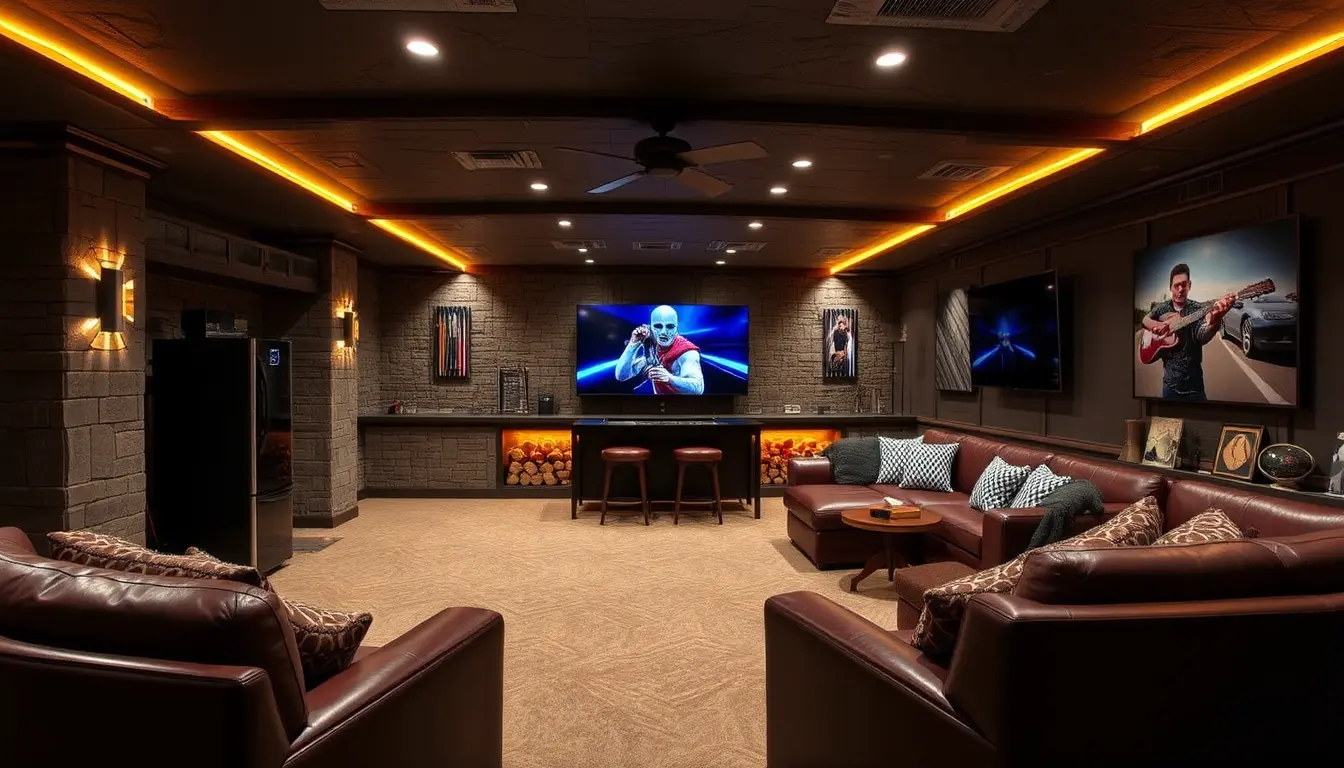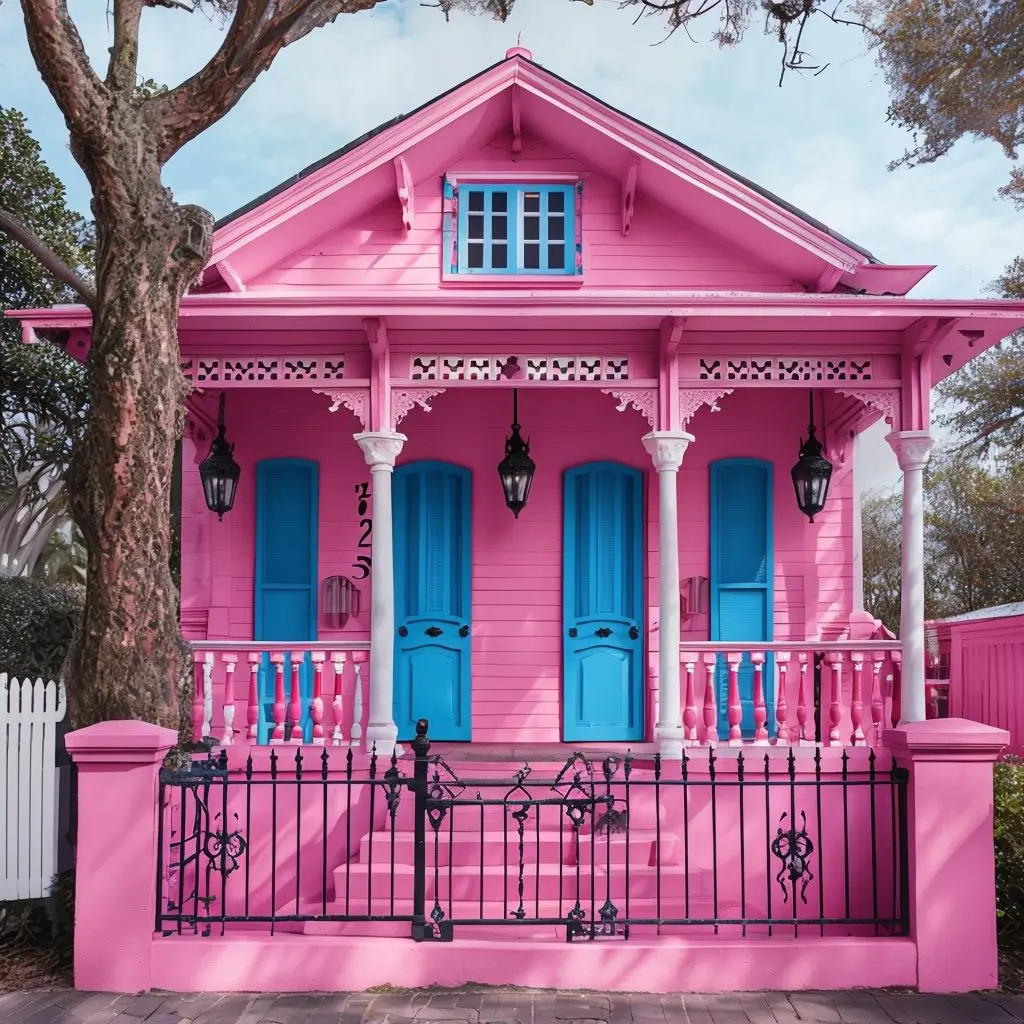The Heart and Soul of Chinese Architecture
You know how they say home is where the heart is? Well, traditional Chinese houses take this saying to a whole new level. These aren’t just buildings – they’re living museums that showcase China’s rich cultural heritage. What fascinates me most is how these homes weren’t just thrown together; they were carefully designed following feng shui principles to create harmony between people and nature.
Think of it as ancient Chinese feng shui masters being the original green architects! They understood something that we’re only now rediscovering – the importance of living in harmony with our environment.
A Walk Through History
The story of traditional Chinese houses is like reading through a fascinating history book. From the mighty Tang Dynasty to the elegant Qing era, each period left its mark on how these homes were built and decorated.
I find it amazing that many of these houses have stood for hundreds of years, weathering wars, natural disasters, and dramatic social changes. What’s their secret? It’s all in the incredibly clever construction techniques and choice of materials.
The Building Blocks of Brilliance
Let me break down the key elements that make these houses so special:
Symmetry and Feng Shui
- Everything is perfectly balanced – like a carefully composed photograph
- North-south orientation maximizes sunlight and good energy flow
- Even numbers of columns and rooms create harmony
The Famous Courtyard Design
Remember playing in your backyard as a kid? Chinese courtyards (siheyuan) take that concept to another level. These aren’t just outdoor spaces; they’re the heart of the home where:
- Families gather for meals and celebrations
- Children play while grandparents watch
- Plants and small gardens bring nature into the city
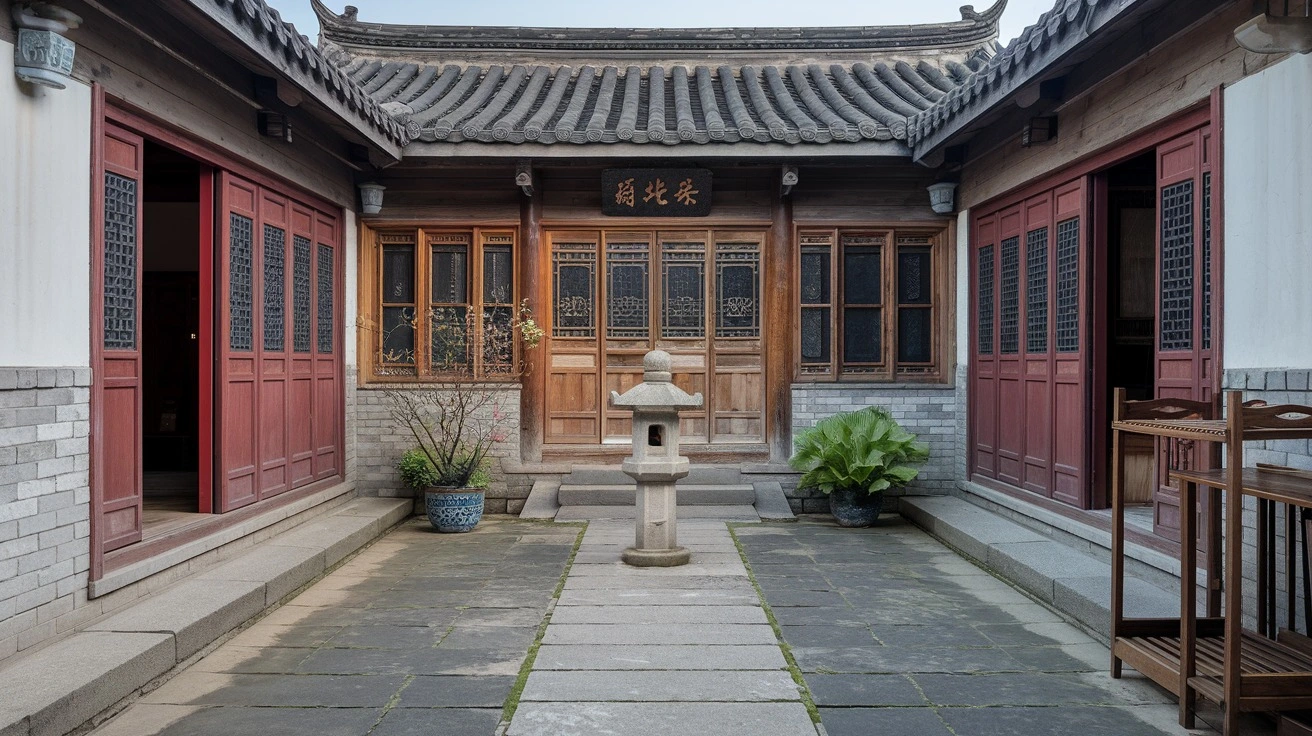
Materials That Stand the Test of Time
The builders used:
- Wood for flexibility during earthquakes
- Stone for foundations and decorative elements
- Clay tiles for those iconic swooping roofs
Those Amazing Roofs
Speaking of roofs, they’re my favorite part! With their upturned corners reaching toward the sky, they look like they’re about to take flight. Did you know those curves weren’t just for show? They helped:
- Create natural ventilation
- Direct rainfall away from the walls
- Maximize sunlight in winter
A House for Every Region
What I love about traditional Chinese houses is how they adapt to different climates and terrain. It’s like each region has its own architectural dialect:
Northern Siheyuan: These are the classic Beijing courtyard homes I mentioned earlier. They’re built to handle those harsh northern winters while creating cozy family spaces.
Fujian Tulou: Imagine a giant fortress that’s an apartment building for an entire clan! These circular or square earthen buildings are like ancient versions of modern-day communities.
Southern Yin-Yang Houses: These clever designs deal with the hot, humid climate using:
- Split-level construction for better airflow
- Light materials for walls
- Large windows for ventilation
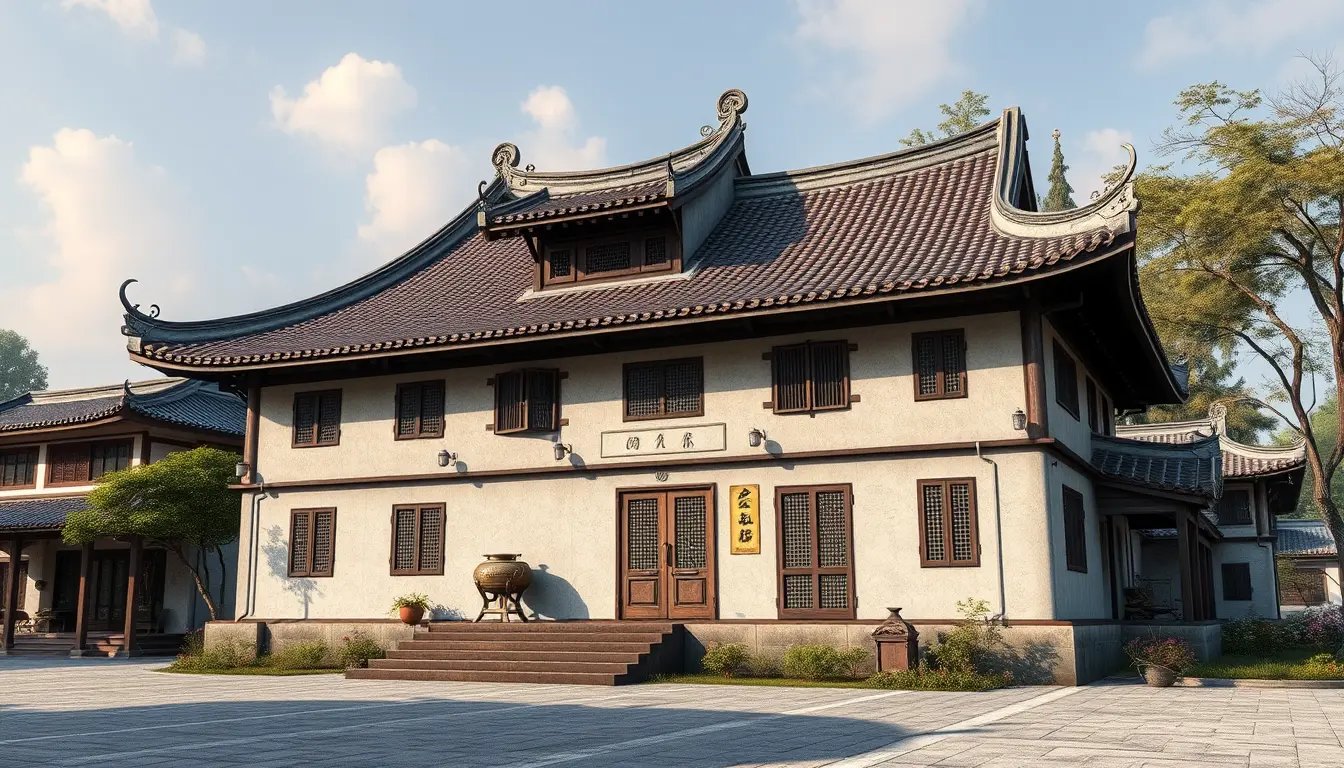
Yaodong Cave Dwellings: Talk about thinking outside the box! These homes built into hillsides are naturally:
- Warm in winter
- Cool in summer
- Incredibly energy efficient
The Art of Decoration
Do you know how we decorate our homes today to express our personality? Well, in traditional Chinese houses, decoration wasn’t just about aesthetics—it was about telling stories, bringing good fortune, and showcasing social status. Let me share what I’ve learned about these fascinating decorative elements.
Colors That Speak Volumes
The color palette in traditional Chinese houses isn’t random – it’s like a symbolic language:
- Red: The star of the show! You’ll see it everywhere, especially on doors and pillars. It represents good fortune, joy, and celebration. During my visits to ancient Chinese homes, I noticed how the red walls glow warmly, especially during sunset.
- Gold: Often paired with red, it symbolizes wealth and prosperity. You’ll find it in intricate patterns on wooden screens and door panels.
- Green: Represents growth and harmony. It’s commonly used in painted wood decorations, especially in gardens.
- Blue: Symbolizes immortality and advancement. You’ll spot it mostly in ceramic decorations.
- Yellow: This was traditionally reserved for imperial buildings, representing power and authority.
Craftsmanship That Takes Your Breath Away
Wood Carvings
The wooden elements in these houses are like art galleries in themselves:
- Window Screens: Intricately carved with scenes from nature or famous stories
- Door Panels: Often featuring the “Eight Immortals” or other legendary figures
- Beams and Brackets: Decorated with flowing patterns of clouds, waves, or mountains
- Privacy Screens: Featuring delicate latticework that creates beautiful shadow plays
I once watched a master craftsman restore a wooden screen in Pingyao. It took him three weeks just to complete one panel – that’s the level of detail we’re talking about!
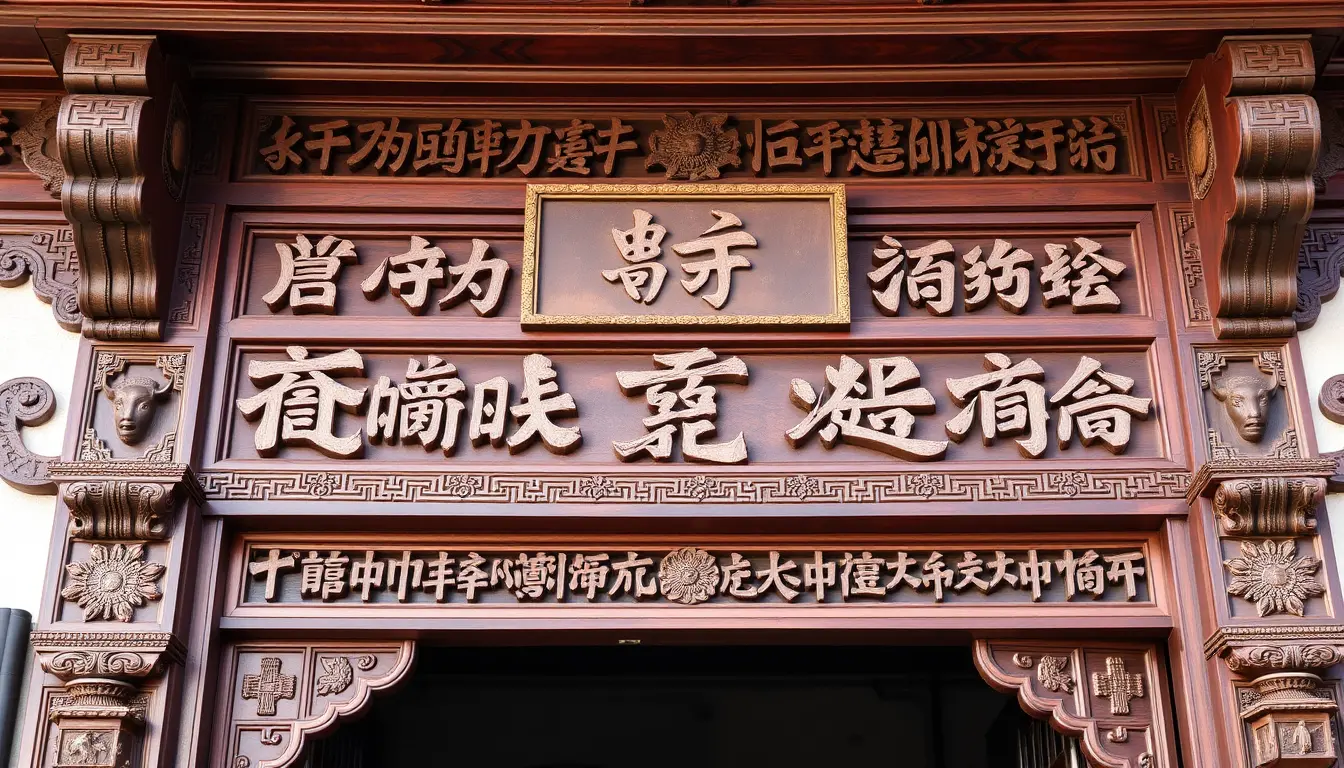
Stone Work
The stone elements aren’t just structural; they’re works of art:
- Stone Lions: Guard the entrances, carved with incredible detail
- Step Stones: Often carved with auspicious patterns
- Garden Rocks: Carefully selected and placed to mimic natural landscapes
- Stone Tablets: Engraved with family histories or poetic inscriptions
Symbolic Motifs That Tell Stories
The decorative motifs you’ll find aren’t just pretty patterns – they’re like a visual prayer for good fortune:
- Dragons: Not just any dragon will do! The number of claws indicated social status. Imperial dragons had five claws, while merchant homes could only display four-clawed dragons.
- Phoenix: Often paired with dragons, representing the perfect balance between yin and yang
- Bats: Believe it or not, bats are lucky! The word for bat (蝠) sounds like the word for fortune (福)
- Fish: Particularly carp, symbolizing abundance and perseverance
- Peonies: Known as the “king of flowers,” representing wealth and honor
Ceramic Art That Dazzles
The ceramic elements add both color and meaning:
- Roof Tiles: Those dragon-shaped ridge tiles weren’t just decorative – they were believed to protect the house from fire
- Wall Tiles: Often featuring the “Double Happiness” character (囍) for weddings
- Garden Decorations: Ceramic sculptures and vases placed strategically throughout
- Tile Murals: Telling stories from literature or mythology
Architectural Details That Amaze
Even the smallest architectural details carry meaning:
- Door Knockers: Usually in pairs, shaped like lion heads or rings
- Window Patterns: The lattice designs often incorporate the character for longevity (寿)
- Threshold Heights: The height of the wooden threshold indicates the room’s importance
- Eave Decorations: Those little figures lined up on roof corners? They’re supposed to ward off evil spirits!
Modern Interpretations
What fascinates me is how these traditional decorative elements are finding new life in contemporary Chinese homes:
- Traditional patterns appearing on modern wallpapers
- Ancient motifs laser-cut into metal screens
- Traditional color combinations inspire modern interior design
- Symbolic elements incorporated into contemporary artwork
I’ve seen modern homes where traditional wooden screens are used as stunning wall art, and ancient ceramic techniques are applied to create contemporary installations. It’s like watching history evolve right before our eyes!
Tips for Appreciating Chinese Decorative Arts
When you visit a traditional Chinese house, try these tricks to fully appreciate the decorative elements:
- Look up! Some of the most intricate work is on the ceilings and upper walls
- Count the bats in decorative patterns – groups of five represent the “Five Blessings”
- Notice how patterns flow from one element to another
- Pay attention to how different materials interact – wood, stone, ceramic, and metal
- Try to spot the “hidden” symbols within larger decorative scenes
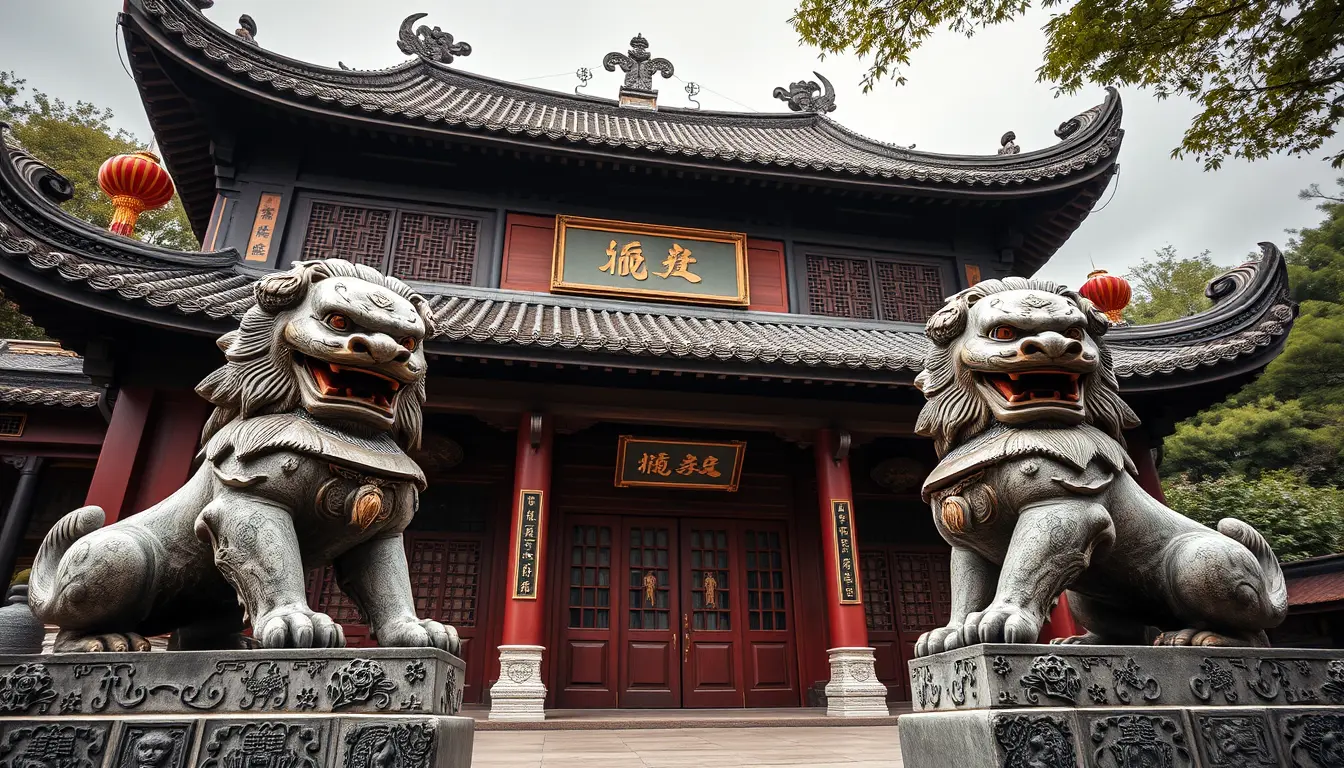
Bridging Past and Present
You might wonder – in an age of glass skyscrapers and smart homes, what place do traditional Chinese houses have? Well, I’m here to tell you that these ancient designs are having quite the renaissance! Let me share some fascinating ways these architectural treasures are inspiring modern living.
Modern Interpretations of Traditional Wisdom
Courtyard Concepts Reimagined
Remember those peaceful courtyards I mentioned earlier? Modern architects are doing amazing things with this concept:
- High-rise apartments with “sky courtyards” every few floors
- Office buildings with central atria that mirror traditional courtyard functions
- Mixed-use developments where courtyards create community spaces
- Eco-friendly designs that use courtyards for natural cooling and ventilation
I recently visited a modern apartment complex in Suzhou that blew me away – they’d created vertical courtyards that climbed up the building like a spiral! It was like seeing the traditional siheyuan concept literally elevated to new heights.
Feng Shui in Contemporary Design
It’s incredible how ancient feng shui principles are proving relevant to modern architecture:
- Natural light optimization through strategic window placement
- Airflow management using traditional ventilation concepts
- Space arrangement that promotes family interaction
- Integration of nature into living spaces
- Balance of private and communal areas
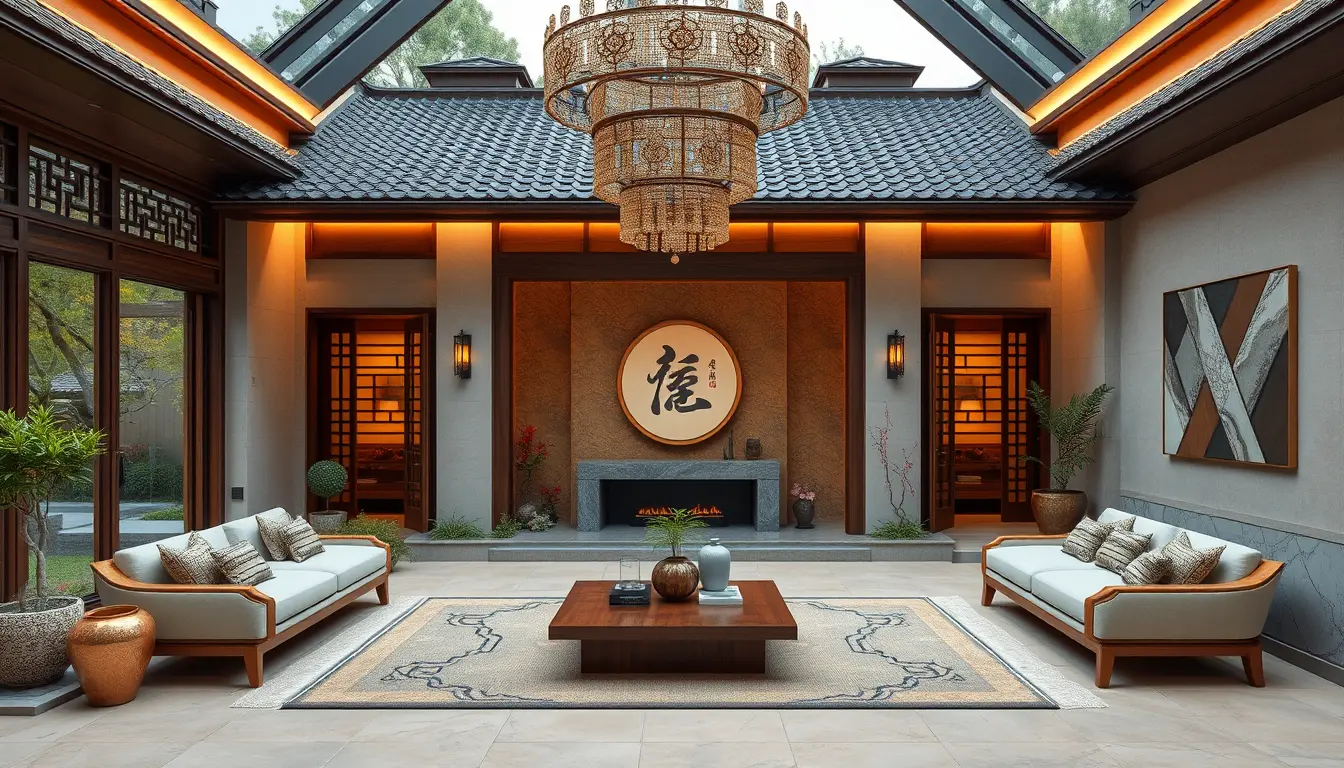
Sustainable Solutions from the Past
You know what’s cool? Many “green” building techniques are borrowed from traditional Chinese architecture:
- Natural Temperature Control
- Using thermal mass principles from traditional walls
- Incorporating seasonal shading techniques
- Adapting courtyard designs for climate control
- Sustainable Materials
- Modern bamboo applications inspired by traditional usage
- Contemporary adaptations of wooden mortise-and-tenon joints
- Eco-friendly versions of traditional roof tiles
Preservation Meets Innovation
Here’s where things get interesting. I’ve seen some brilliant examples of how old and new can coexist:
Adaptive Reuse Projects
- Traditional houses converted into:
- Boutique hotels that maintain original structures
- Cultural centers celebrating local heritage
- Modern homes with historic character
- Art galleries and museums
- Creative office spaces
Restoration Technologies
Modern technology is helping preserve these treasures:
- 3D scanning to create detailed architectural records
- Advanced materials for subtle structural reinforcement
- Non-invasive restoration techniques
- Digital modeling for preservation planning
Contemporary Homes with Traditional Soul
What excites me is seeing how modern Chinese homes incorporate traditional elements:
Design Elements
- Modern interpretations of traditional roof lines
- Contemporary screen walls inspired by ancient patterns
- Updated versions of traditional window lattices
- Simplified versions of decorative motifs
Spatial Arrangements
- Open-plan layouts that respect traditional spatial hierarchies
- Modern family rooms that mirror ancestral halls
- Updated kitchen designs that maintain wok-cooking traditions
- Contemporary gardens based on classical principles
Cultural Impact in Modern Times
The influence of traditional Chinese houses extends beyond architecture:
In Popular Culture
- Television shows featuring traditional house renovations
- Documentary series exploring architectural heritage
- Social media influencers showcasing traditional design elements
- Home decoration trends inspired by traditional motifs
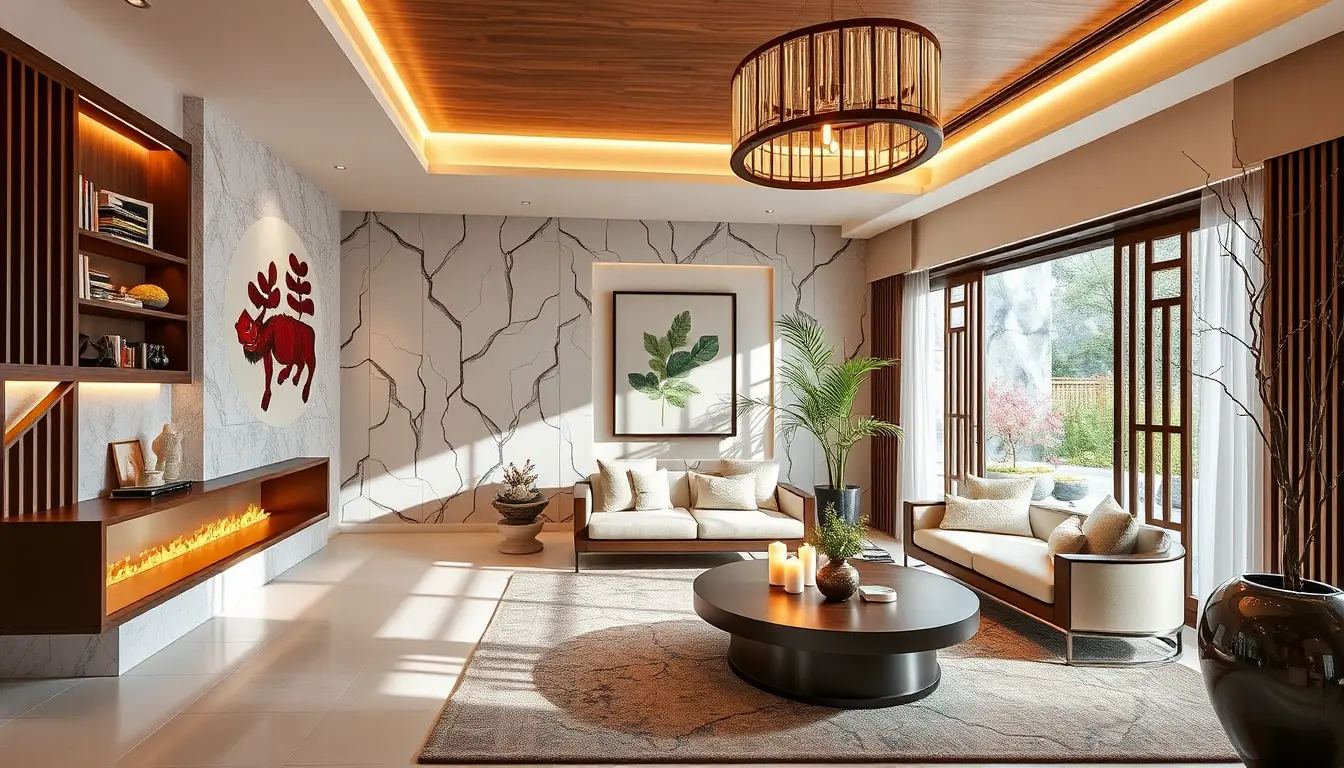
In Education
- Architecture schools studying traditional building techniques
- Craftsmanship programs preserving ancient skills
- Design workshops focusing on traditional principles
- Cultural heritage programs for the public
Looking Forward While Honoring the Past
What’s truly remarkable is how these ancient designs are helping solve modern challenges:
Urban Planning Solutions
- Traditional neighborhood layouts inspiring walkable communities
- Courtyard concepts adapted for high-density housing
- Ancient water management techniques applied to modern cities
- Traditional privacy solutions adapted for urban living
Environmental Innovations
- Natural cooling systems based on traditional designs
- Sustainable material choices inspired by ancient builders
- Energy-efficient layouts drawing on historical principles
- Green roof systems adapted from traditional gardens
The Best of Both Worlds
What we’re seeing today is a beautiful fusion where:
- Modern technology enhances traditional design principles
- Ancient wisdom informs contemporary solutions
- Traditional aesthetics meet modern functionality
- Historical preservation embraces innovation
I’ve seen young architects getting creative with this blend. One of my favorite examples is a new residential complex in Hangzhou that uses traditional proportions and layouts but with modern materials and smart home technology. It’s like they’ve created a time machine that works both ways!
The future of Chinese architecture isn’t about choosing between past and present – it’s about creating thoughtful dialogues between them. Whether it’s a fully restored traditional house or a modern home with cultural touches, these designs remind us that good architecture is timeless.
The Social Heart of Chinese Culture
Traditional Chinese houses weren’t just buildings – they were the center of family and community life. Imagine festival celebrations with:
- Lanterns hanging in courtyards
- Extended families gathering for meals
- Children running through connected spaces
- Neighbors sharing special moments
These homes shaped Chinese society, art, and literature. They appear in countless paintings, poems, and films, always symbolizing the deep connection between family, home, and tradition.
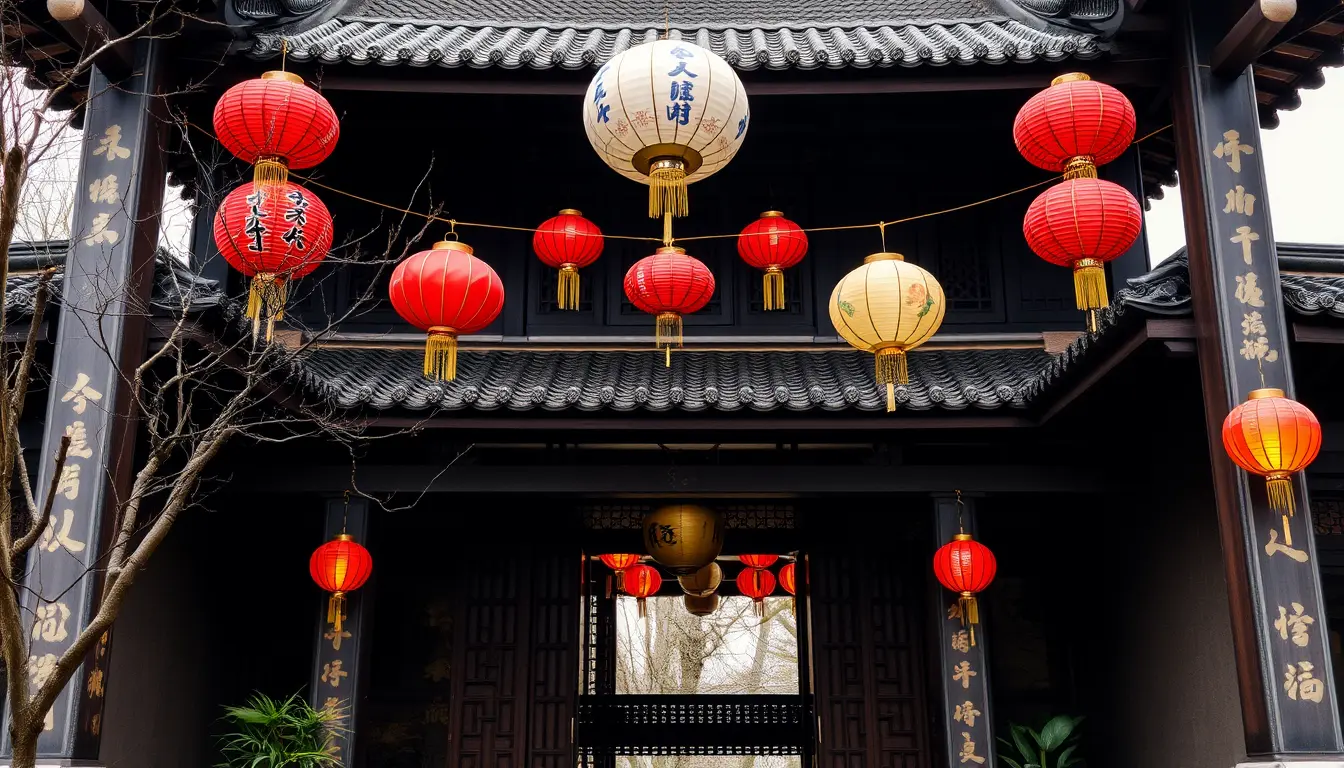
Looking to the Future
As I wrap up this journey through the world of traditional Chinese houses, I can’t help but feel optimistic about their future. Yes, many have been lost to development, but there’s a growing appreciation for these architectural treasures. People are:
- Renovating old houses while preserving their character
- Learning from traditional building techniques
- Applying ancient wisdom to modern challenges
These houses remind us that good design isn’t just about looking pretty – it’s about creating spaces that nurture families, strengthen communities, and honor our connection to nature. In a world of rapid change, maybe that’s exactly what we need to remember.
What aspects of traditional Chinese houses fascinate you the most? Is it their clever design, their cultural significance, or perhaps their ability to stand the test of time? These remarkable buildings continue to capture imaginations worldwide.
